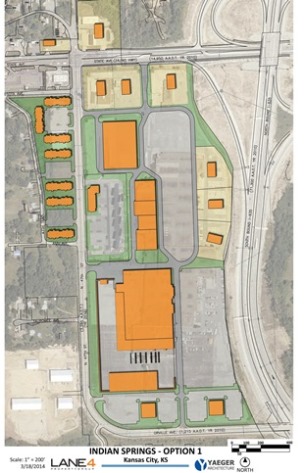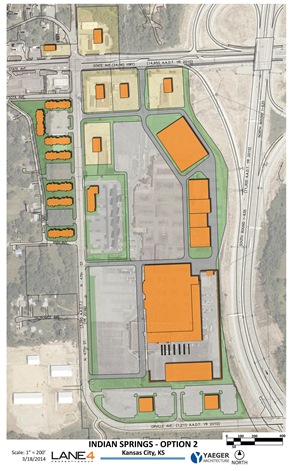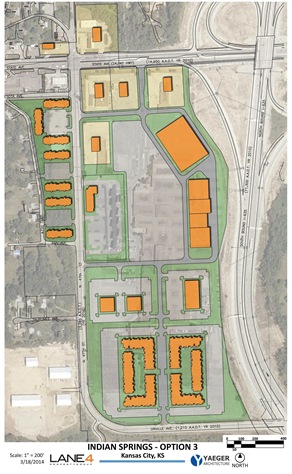
Window on the West
Opinion column
by Mary Rupert
The Unified Government Commission has re-started the search to redevelop one of the biggest empty places in Kansas City, Kan. – Indian Springs.
A preliminary redevelopment agreement with Lane4 was approved 5-0 at the April 28 UG economic development committee meeting, and is expected to advance May 15 to the UG Commission for further discussion.
But a first UG economic development committee meeting April 7 ended without an endorsement of the effort when Commissioner Jim Walters, whose background includes the Sporting KC stadium project, asked the developer for more specifics when looking at some sketches of options for the former shopping mall property.
“I haven’t given up on a landmark development,” Walters said April 7. “I just don’t see anything here that leads me to believe we’re aiming high enough.”
One of his points was that the property at I-70 and I-635 was a large contiguous urban site that just isn’t found anywhere. He said then he wanted to make sure that they weren’t locked into a lot of small developments that could be placed anywhere.
Walters has since met with Lane4, discussed concepts, and now has voted to approve the project moving forward. At the April 28 committee meeting, he said that after meeting with Lane4, he was on the same wave length, and he looked forward for the property to be a transformational development in the midtown area.
Officials said the options they presented earlier were not intended to be well-developed plans, but were just ideas for going forward with the project. George Brajkovic, UG director of economic development, said at the April 28 meeting that the earlier drawings were intended only to depict mass and scale for potential redevelopment.
At the April 28 meeting, Lane4 officials said they agreed with commissioners that their goal is not to short-sell the property, but to see what its potential is in the market. Lane4 officials said they would like to bring back a project the commission can consider after working on it for a year or so.
Commissioner Walters’ first reaction probably is the same of people all around the community. The community expects a lot from that redevelopment, maybe even a Village East or a Village Midtown. But the project will be different from the old Indian Springs mall, and residents need to expect that, too.
Currently, plans are not set in stone, according to officials, but some mixed use development including retail and residential is expected by the commission.
The UG has owned the 40-year-old Indian Springs mall and property since 2007, and it has been virtually vacant for decades, with some government offices located there. An earlier attempt to redevelop it in early 2009 as a retail area with a look that reminded one of Prescott Plaza did not go anywhere. The economy at that time was still somewhat weak. Another idea that had been suggested earlier for Indian Springs was a big community aquatic and fitness center; however, with its location at the intersection of I-70 and I-635, Indian Springs still remains an ideal retail location, and the commission opted for the retail-mixed use development.
Under the two-year agreement, Lane4 will serve as a exclusive broker and market the property to potential retailers, and it also can seek out developers for other parts of the Indian Springs property. As the owner, the UG still would have control over what is approved for the property. The types of tenants, according to the agreement, include categories such as grocery stores, department stores, junior box stores, small shops, restaurants, banks and other businesses, and possibly senior living, apartments, flex space, governmental facilities, industrial, office or other uses.
“After talking with representatives of Lane4, I have gained lot of confidence in their vision and we can work together very well on the overall development of this property,” Walters said on April 28.
It is a good thing for expectations to be high for the Indian Springs redevelopment project, and the local government is to be commended for not giving up on redeveloping it. Lane4 is in a good position, constantly working with retailers around the metro area, to find good tenants for the property. It will be a great adventure and a great task to do another excellent development at Indian Springs, and we wish them success.
To reach Mary Rupert, editor, email maryr@wyandottepublishing.com.


